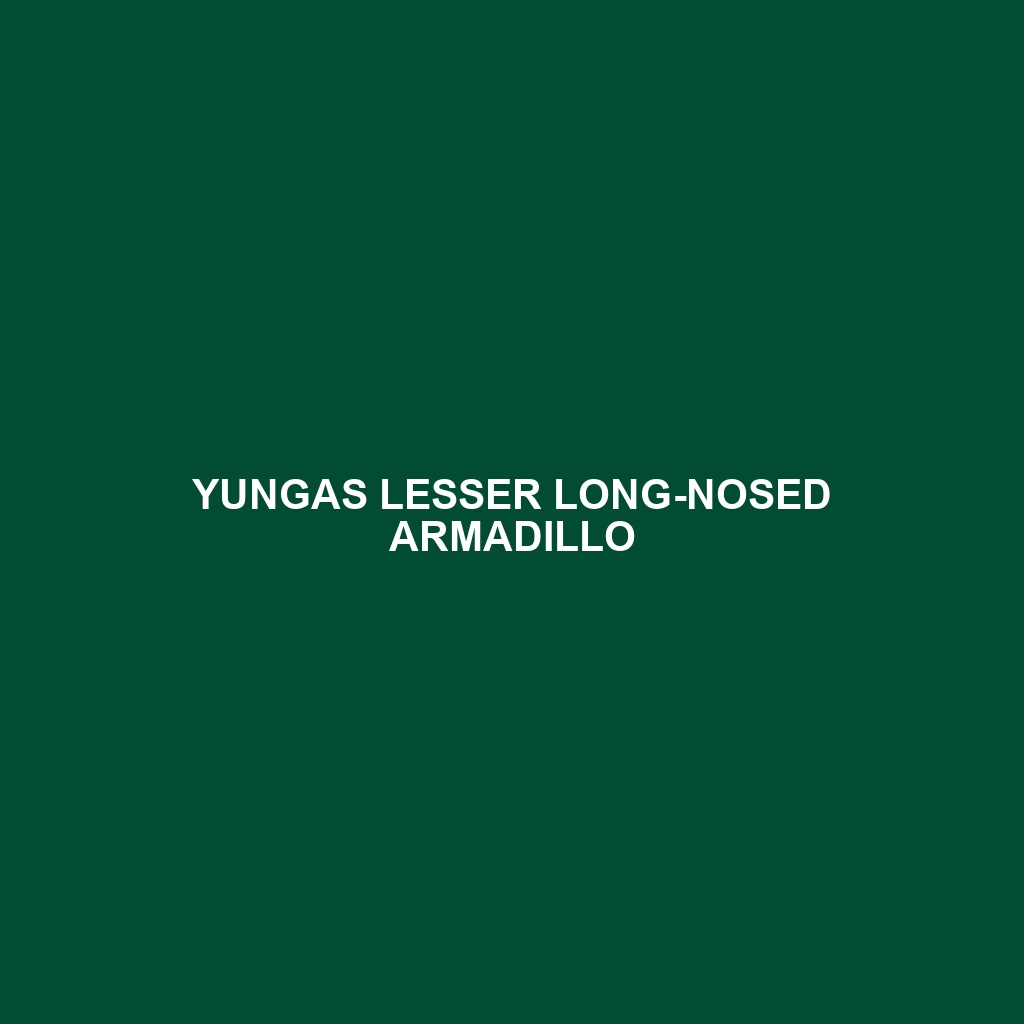Yungas Lesser Long-nosed Armadillo: A Comprehensive Overview
The Yungas Lesser Long-nosed Armadillo (Dasypus beniensis) is a fascinating mammal native to the Yungas region, a tropical and subtropical forest area that stretches along the eastern slopes of the Andes in Bolivia and Argentina. Known for its distinctive elongated snout and robust, protective armor, this armadillo is a marvel of evolutionary adaptation. It plays a crucial role in its ecosystem, both as a forager and as prey for larger predators.
Physical Characteristics:
Size: The Yungas Lesser Long-nosed Armadillo is relatively small, measuring about 30 to 40 centimeters (12 to 16 inches) in head-to-body length, with a tail length of approximately 15 to 20 centimeters (6 to 8 inches).
Weight: They typically weigh between 1 to 3 kilograms (2.2 to 6.6 pounds).
Coloration: This armadillo’s coloration is generally a mix of grey and brown hues, which provides excellent camouflage against the forest floor.
Special Features: One of its most striking features is its long, pointed snout, which it uses to sniff out insects and other small invertebrates. Its body is covered in a series of overlapping bony plates, forming a tough shell that offers protection from predators.
Behaviors:
Social Interactions: The Yungas Lesser Long-nosed Armadillo is primarily solitary, coming together with others only during the breeding season. They communicate through a series of grunts and squeaks.
Feeding Habits: This armadillo is an omnivore, with a diet that includes insects, worms, small vertebrates, fruits, and vegetation. It uses its keen sense of smell to locate food and its strong forelimbs and claws to dig.
Ecological Roles: As a digger, the armadillo aids in soil aeration, which benefits plant growth. It also helps control insect populations, making it an important player in the ecosystem.
Habitats:
Range: The Yungas Lesser Long-nosed Armadillo is endemic to the Yungas regions of Bolivia and Argentina, thriving in the humid, densely vegetated forests.
Environmental Preferences: It prefers areas with loose, moist soil that is easy to dig through, often near water sources such as streams and rivers.
Adaptations:
Armor: Its hard, protective shell wards off predators.
Snout and Tongue: The elongated snout and sticky tongue allow it to reach and consume insects hidden in crevices and underground.
Claws: Strong, curved claws are essential for digging burrows, which serve as shelter and as a means to escape from predators.
Conservation Status:
Current Status: The Yungas Lesser Long-nosed Armadillo is currently listed as “Data Deficient” by the IUCN, indicating that more research is needed to determine its population trends and threats.
Threats: Habitat loss due to deforestation and agricultural expansion poses significant risks. Additionally, they are occasionally hunted for their meat and shell.
Fascinating Fun Facts:
Nocturnal Habits: This armadillo is primarily nocturnal, which helps it avoid predators and the heat of the day.
Temperature Regulation: Armadillos have a low metabolic rate and lack insulating fat layers, making them more active during cooler hours and seeking shade or burrows during the heat.
Unique Reproduction: Like other armadillos, they exhibit delayed implantation, meaning the fertilized egg can remain dormant before developing, ensuring the young are born in favorable conditions.
In , the Yungas Lesser Long-nosed Armadillo is a remarkable creature with unique adaptations that allow it to thrive in its specific niche within the Yungas forests. Its role in the ecosystem highlights the interconnectedness of species and the importance of preserving their habitats.
